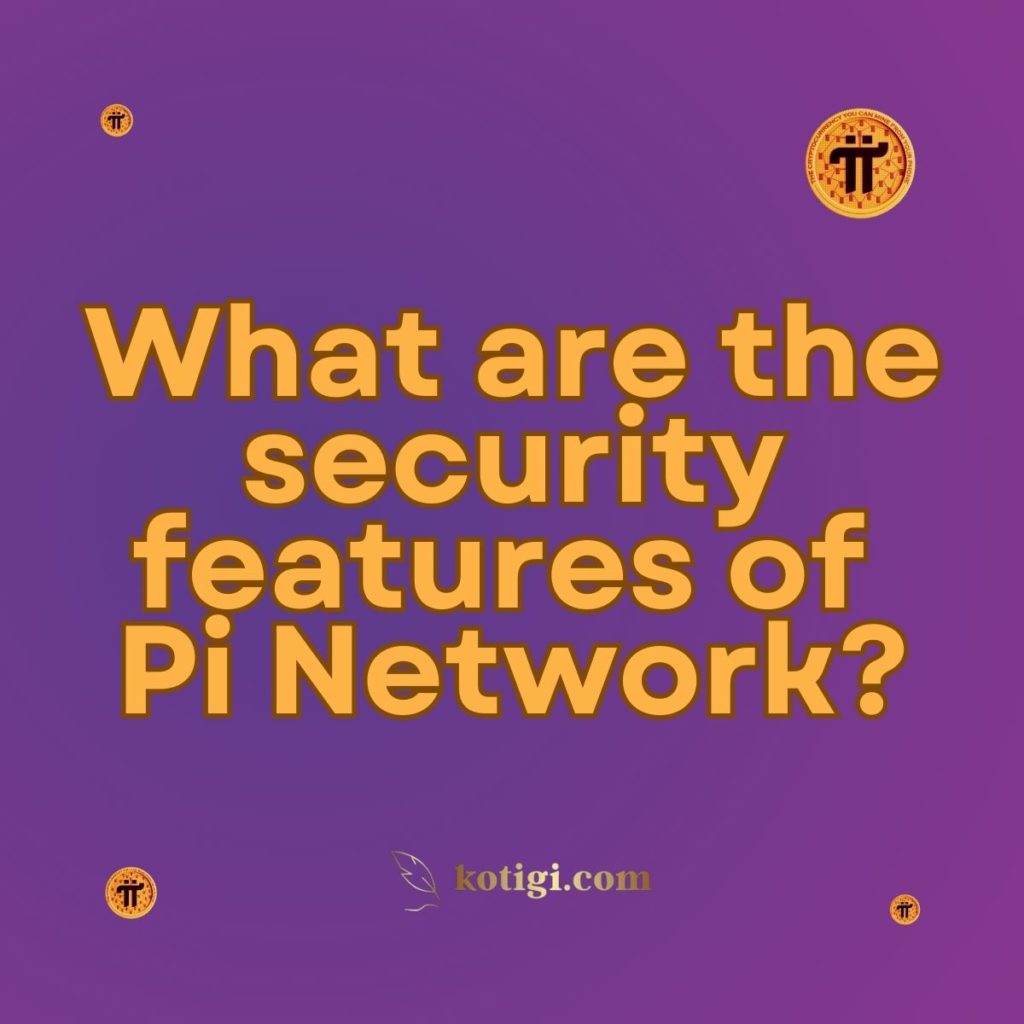
What are the security features of Pi Network?
Pi Network incorporates a range of security features, including user verification, security circles, decentralized consensus algorithms, and encryption, to protect user data and ensure a secure, trust-based environment for its users. By prioritizing network integrity and decentralization, Pi ensures a high level of security throughout its ecosystem.
Introduction
As the Pi Network continues to grow in popularity, ensuring the safety and security of its users is a top priority. In the world of cryptocurrency, security is paramount due to the decentralized nature of blockchain technology, where there is no central authority to safeguard transactions or user information. Pi Network has developed several innovative security features that provide users with a safe and secure environment while maintaining the decentralized principles of blockchain technology.
Let’s delve into the specific security features Pi Network offers to protect its users and their data.
1. User Verification and KYC (Know Your Customer)
One of Pi Network’s most important security features is its user verification process, ensuring that real people, rather than bots or fraudulent accounts, are using the platform.
1.1 The Importance of KYC in Pi Network
KYC, or Know Your Customer, is a verification process that helps prevent fraud, identity theft, and other illegal activities by confirming the identity of users. In Pi Network, KYC is essential for ensuring that real people are contributing to the network, protecting its integrity.
1.2 KYC Implementation for Pi Miners
Pi Network requires users to undergo KYC before they can fully utilize their mined Pi. This ensures that users comply with regulatory requirements and helps to safeguard the network from malicious activities.
1.3 Protecting User Data through KYC
Pi Network takes extra measures to protect user data during the KYC process. The platform partners with third-party KYC providers, which ensures that personal information is securely stored and not misused.
2. Security Circles
Pi Network has implemented a unique security feature called “security circles” to further enhance the platform’s safety and integrity.
2.1 What Are Security Circles?
Security circles are groups of trusted individuals within the Pi Network who verify each other’s transactions. This decentralized verification system ensures that only trusted users are participating in securing the network.
2.2 Decentralized Security Model
The security circles model aligns with Pi’s decentralization philosophy, allowing users to create their own circles of trust. This decentralization helps prevent fraud and enhances the overall security of the network by making it harder for malicious actors to infiltrate the system.
2.3 Enhancing Network Trust and Accountability
Security circles encourage users to invite only trusted individuals to join the network. By doing so, Pi Network strengthens its security model, ensuring that users are held accountable for who they add to their circles.
3. Decentralized Consensus Algorithm
Pi Network employs a decentralized consensus algorithm that ensures the integrity of transactions and prevents fraud.
3.1 What is a Consensus Algorithm?
A consensus algorithm is a method by which all participants in a decentralized network agree on the state of the blockchain. Pi Network uses a consensus algorithm based on the Stellar Consensus Protocol (SCP), which is designed to be efficient and secure.
3.2 Ensuring Network Integrity
By using SCP, Pi Network ensures that all transactions are validated in a decentralized manner, without the need for a central authority. This prevents any single point of failure and protects the network from attacks.
3.3 Preventing Fraud through Consensus
The decentralized consensus mechanism prevents malicious actors from tampering with transactions or creating fraudulent entries. It ensures that only legitimate transactions are added to the Pi blockchain, maintaining the trustworthiness of the network.
4. End-to-End Encryption
Pi Network uses encryption techniques to secure communications between users and the platform, safeguarding personal data and ensuring privacy.
4.1 What is End-to-End Encryption?
End-to-end encryption is a method of securing communication so that only the communicating users can read the messages. Pi Network uses this technology to ensure that all data exchanged between users and the platform is kept secure.
4.2 Protecting User Privacy
With end-to-end encryption, Pi Network ensures that user information, including personal details and transaction data, is kept private. This level of encryption prevents unauthorized access by third parties or hackers.
4.3 Securing Transactions and Communications
All communications and transactions on the Pi Network are encrypted, protecting them from interception and manipulation. This ensures that users can safely engage with the platform without fear of their data being compromised.
5. User Account Security
Pi Network provides users with several tools to secure their accounts and prevent unauthorized access.
5.1 Multi-Factor Authentication (MFA)
One of the key account security features offered by Pi Network is Multi-Factor Authentication (MFA). MFA adds an extra layer of protection by requiring users to verify their identity through multiple channels, making it more difficult for hackers to gain access to accounts.
5.2 Strong Password Requirements
Pi Network encourages users to create strong, unique passwords for their accounts, further protecting against unauthorized access. Strong password policies help mitigate risks associated with weak or easily guessable credentials.
5.3 Account Recovery Options
In the event of account issues, Pi Network provides recovery options, ensuring that users can regain access to their accounts securely. These recovery methods help prevent permanent loss of access due to forgotten credentials or account compromise.
6. Secure Wallets and Asset Protection
Pi Network aims to ensure that users’ assets are secure by implementing robust wallet security measures.
6.1 Pi Wallet Security
The Pi Wallet is designed to be user-friendly while incorporating advanced security features. Private keys are stored securely, ensuring that users maintain full control over their Pi assets.
6.2 Asset Control and Protection
Users of the Pi Wallet have complete control over their assets, with security protocols in place to protect against hacking and unauthorized transfers. The wallet’s design ensures that users’ Pi is protected at all times.
6.3 Secure Transactions
Transactions conducted through the Pi Wallet are encrypted and verified by the network’s decentralized consensus algorithm, ensuring that they are secure and cannot be altered by malicious actors.
7. Regular Security Audits and Updates
Pi Network takes proactive measures to keep its platform secure by regularly conducting security audits and updates.
7.1 Importance of Security Audits
Security audits are crucial for identifying potential vulnerabilities in the network. Pi Network conducts regular audits to ensure that its security measures are up-to-date and effective in preventing breaches.
7.2 Addressing Vulnerabilities
Through these audits, Pi Network can quickly address any vulnerabilities before they can be exploited. This proactive approach helps ensure the continued security of the platform and its users.
7.3 Ongoing Updates for Enhanced Security
In addition to audits, Pi Network continually updates its security protocols to keep pace with new threats and technologies. These updates are designed to ensure that the platform remains secure as it grows and evolves.
Conclusion
Pi Network incorporates a variety of security features, ranging from user verification and security circles to encryption and decentralized consensus algorithms. These measures help protect users and ensure the overall safety of the network. By leveraging both decentralized technology and strong user account protections, Pi Network offers a secure environment for its growing community.
Key Takeaways:
- Pi Network uses KYC verification to ensure that real users are part of the network.
- Security circles enhance the decentralized security model by building trusted user groups.
- A decentralized consensus algorithm ensures the integrity of all transactions on the network.
- End-to-end encryption protects user data and communications.
- Pi Network implements multi-factor authentication and strong password policies for account security.
- Secure wallets and regular security updates provide ongoing protection for users and their assets.





